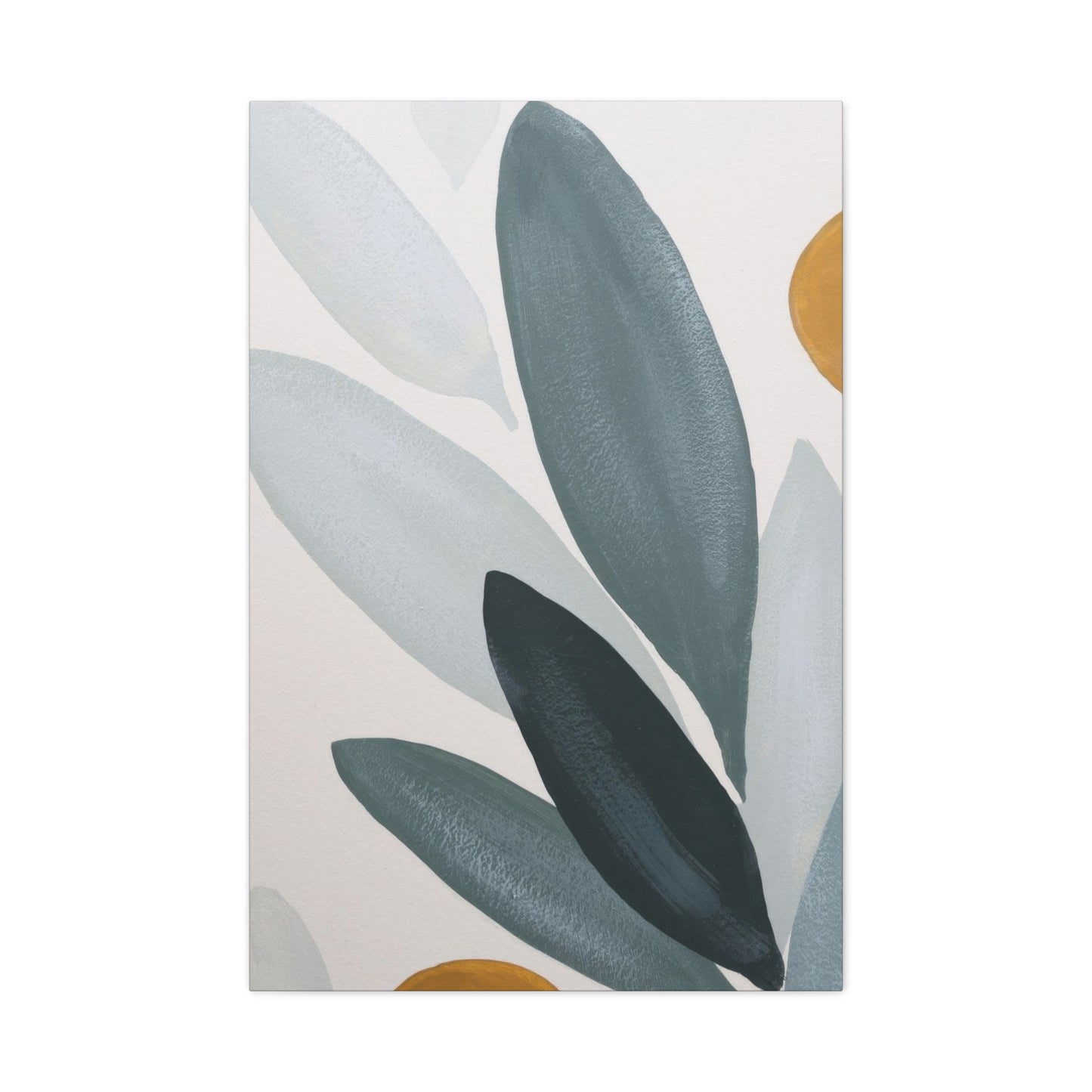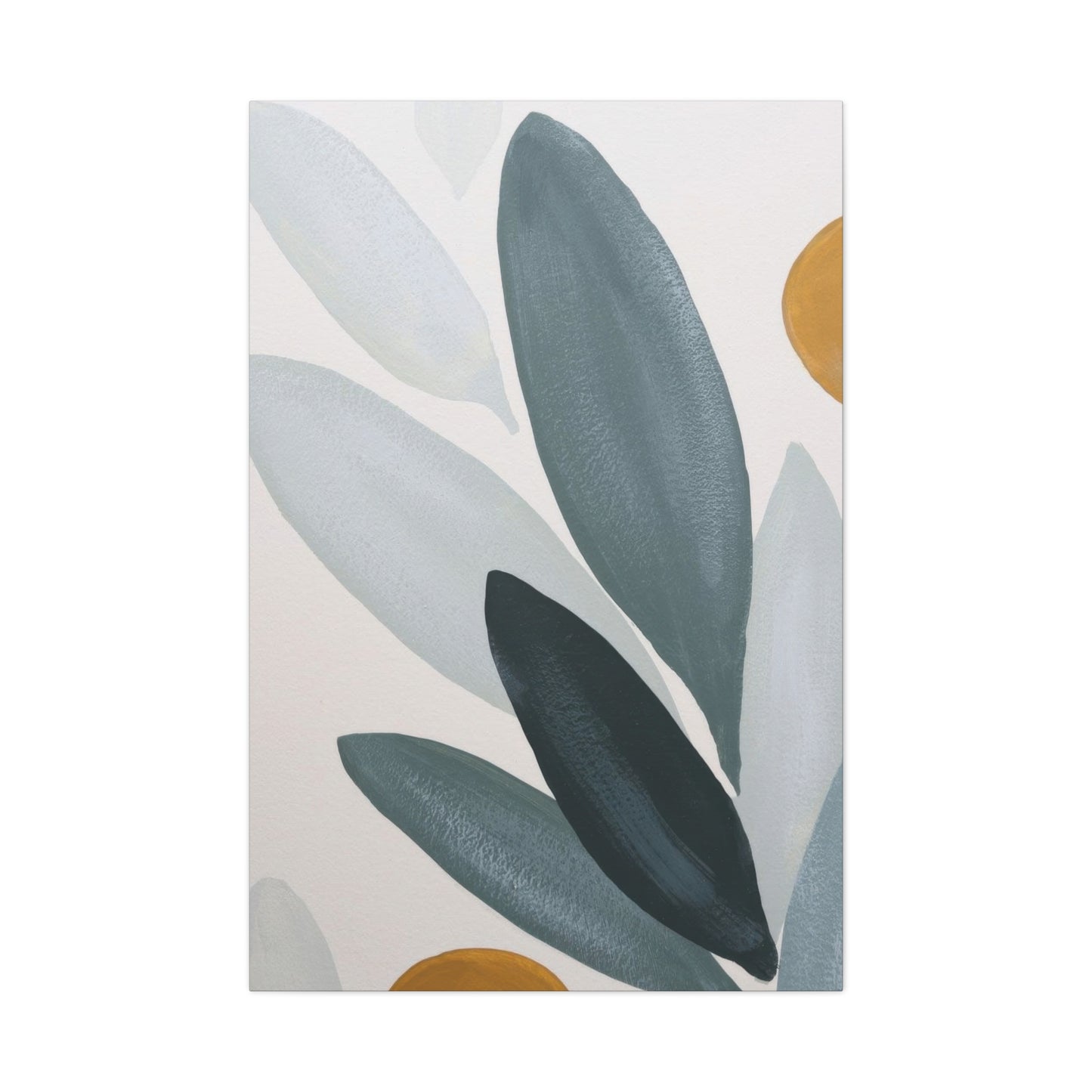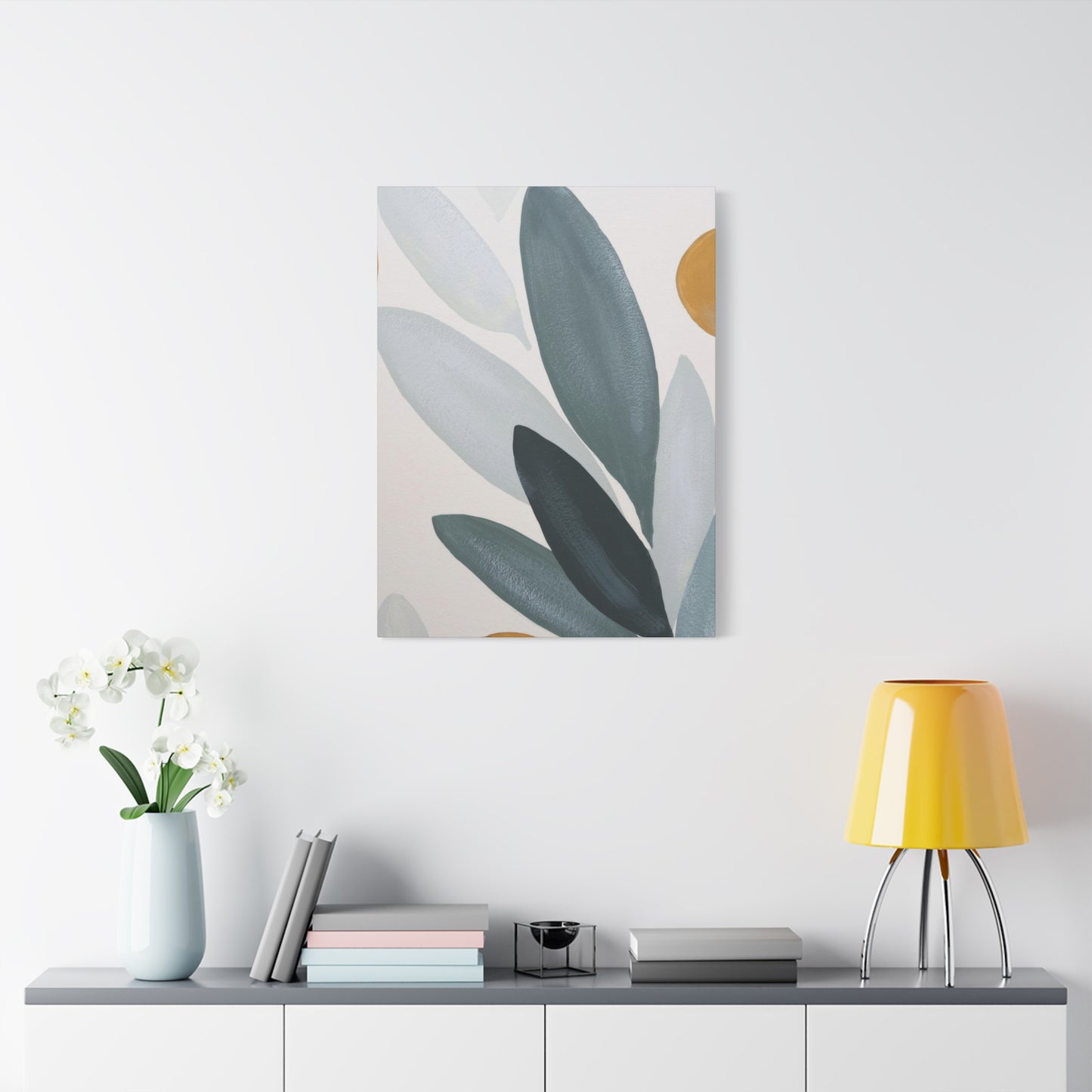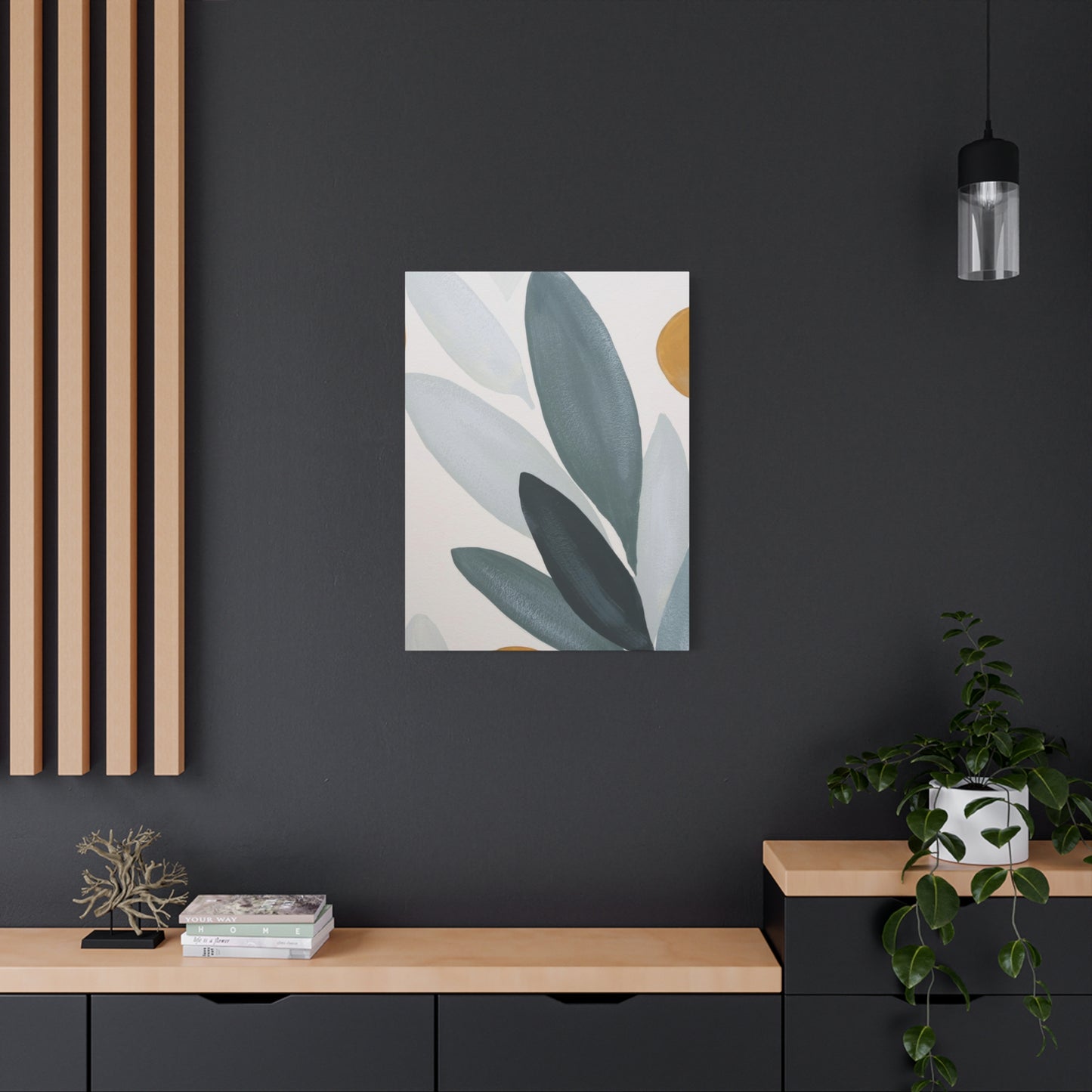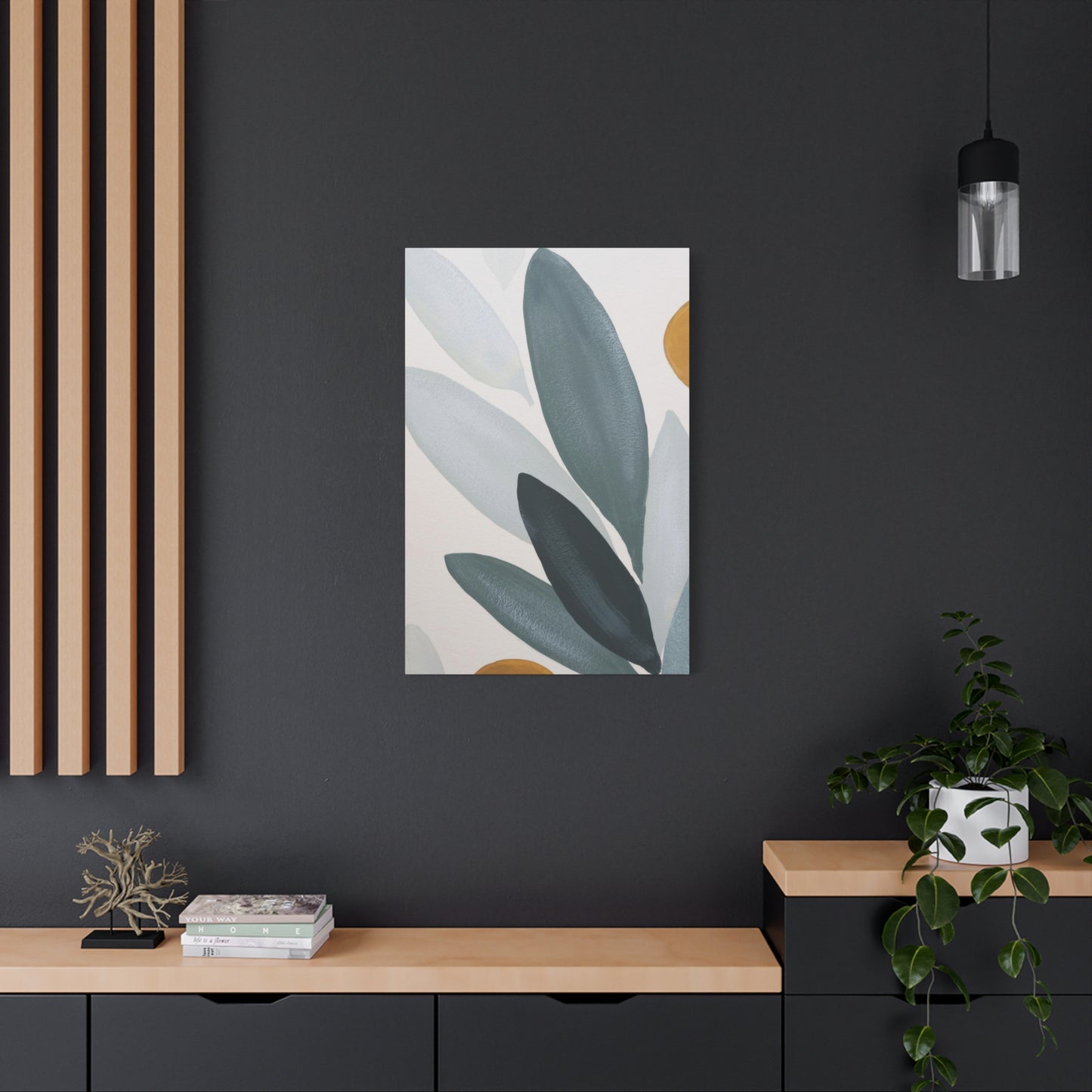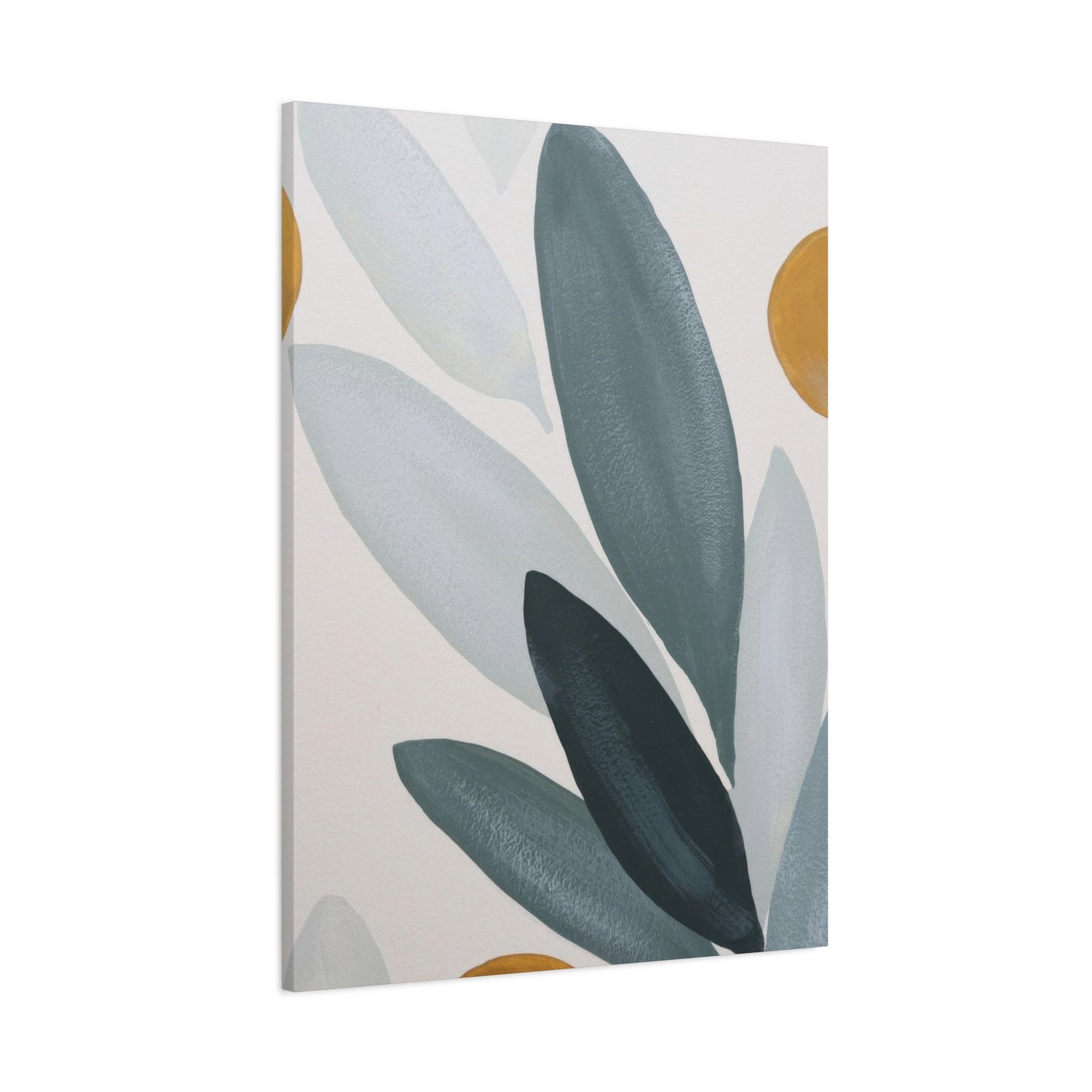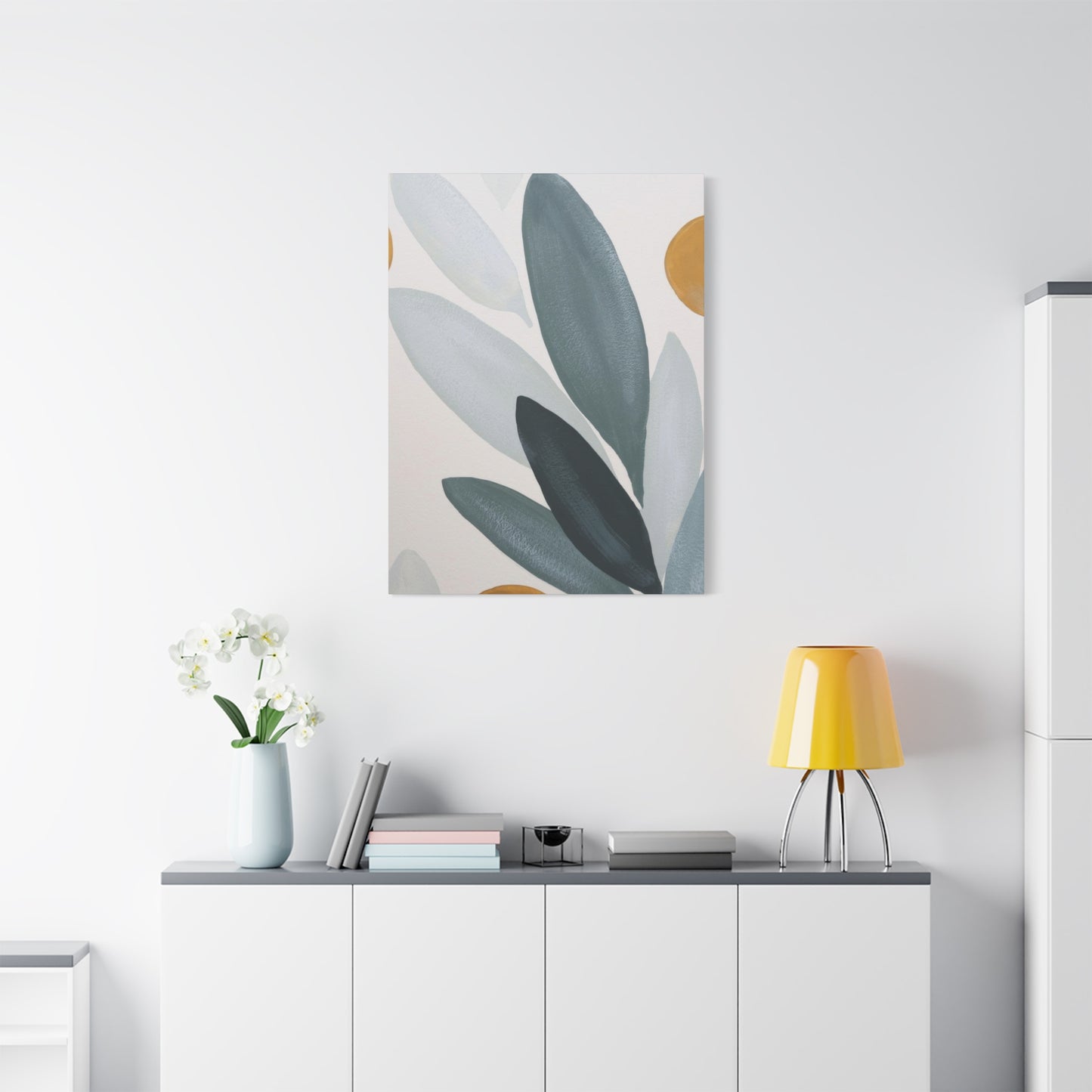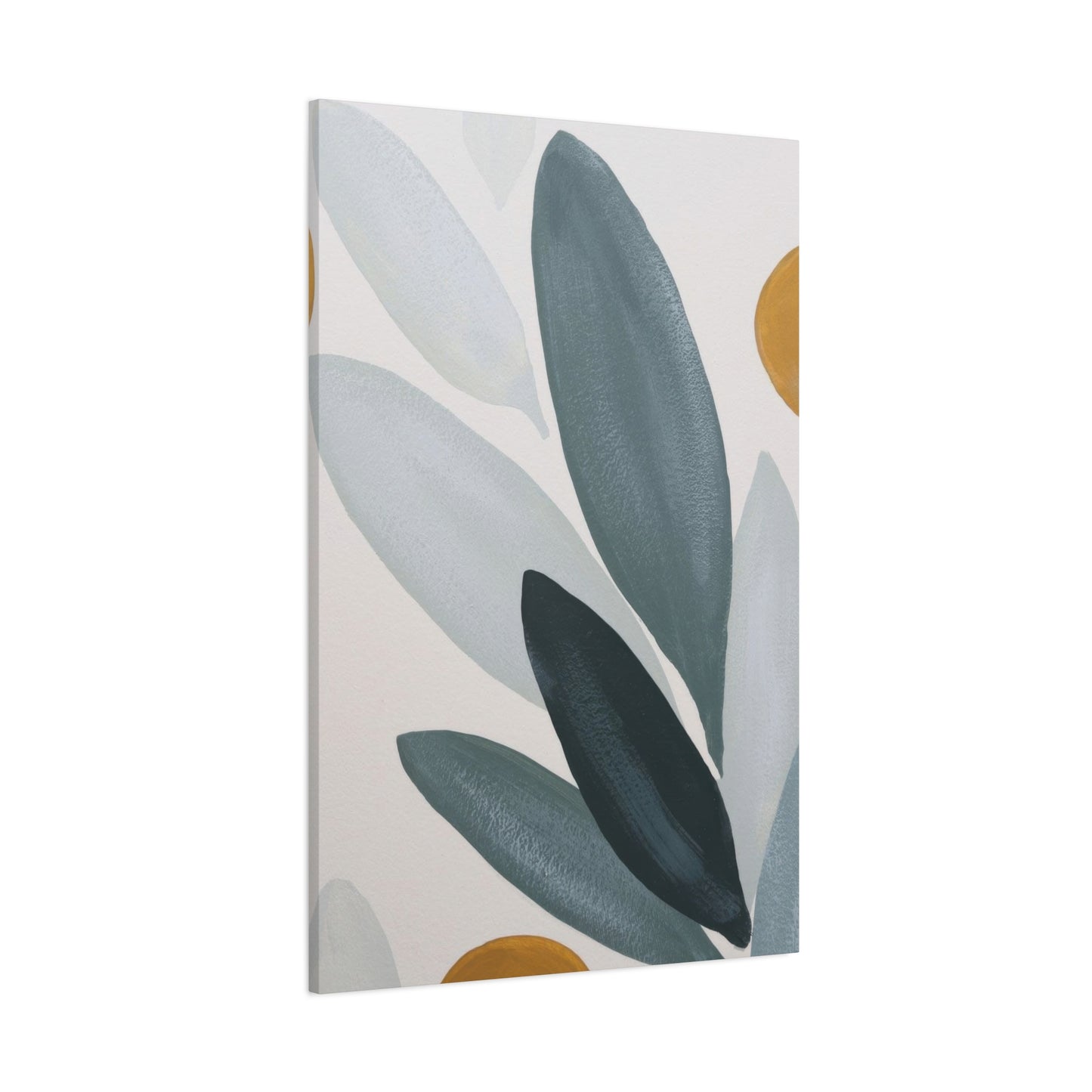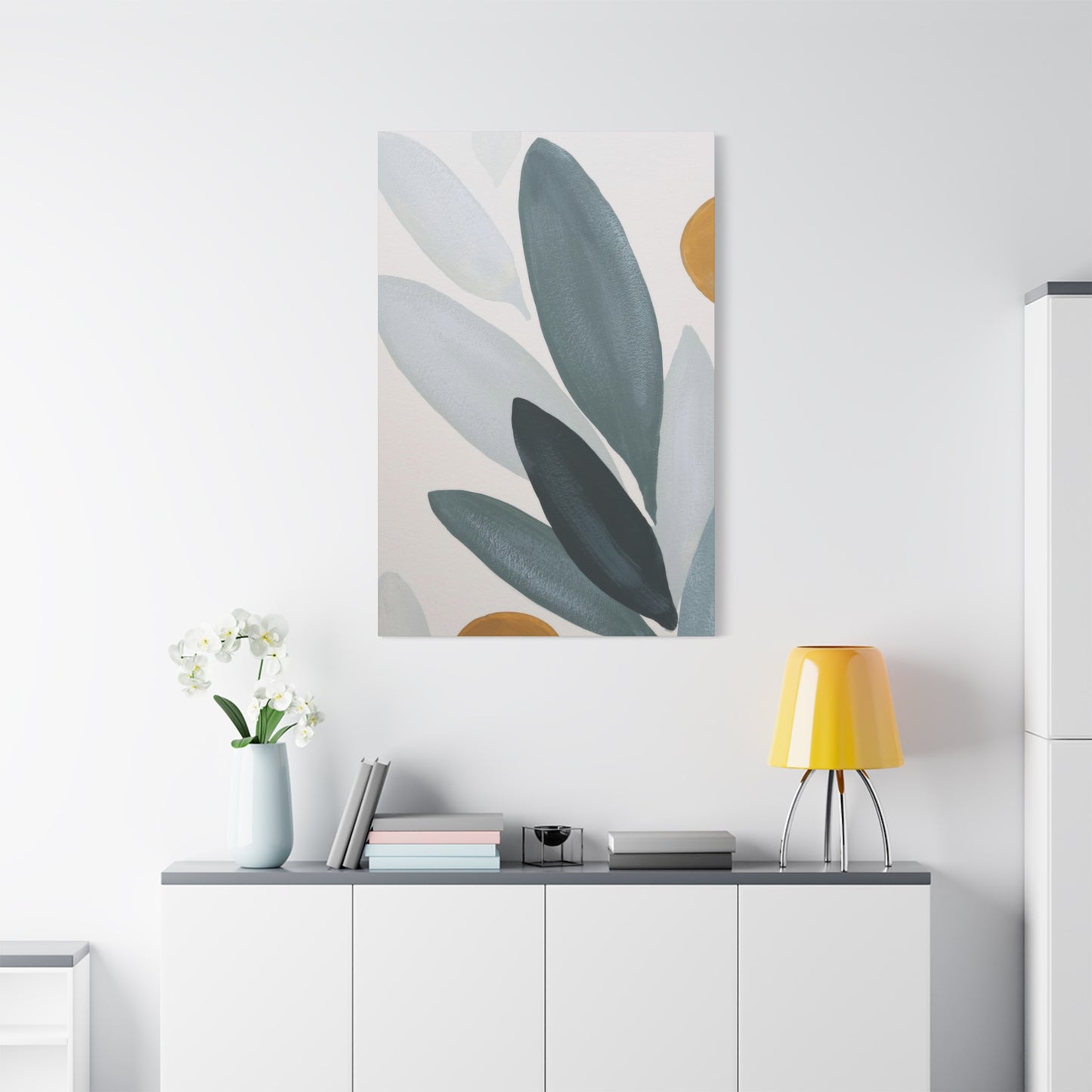The Ultimate Guide to Grey Leaves Deco Wall Art: Elegance, Style, and Inspiration
In the vast and ever-evolving world of interior design, certain trends emerge with a brilliant flash only to fade into obscurity, while others possess a quiet, enduring quality that cements their place as timeless classics. Grey leaves deco wall art falls firmly into the latter category. This sophisticated and remarkably versatile art form captures the delicate beauty of nature and filters it through a lens of modern elegance and serene neutrality. It is more than just a decorative element; it is a statement of refined taste, an invitation for tranquility, and a bridge between the organic world outside and the curated comfort of our homes. The appeal lies in its inherent duality: the organic, untamed shape of a leaf, a symbol of life and growth, is rendered in grey, a color associated with balance, intellect, and calm.
This powerful combination allows it to harmonize with nearly any design scheme, from the starkly minimalist to the richly traditional. This comprehensive guide will journey through every facet of grey botanical art, exploring its psychological impact, stylistic variations, practical applications, and the profound ways it can transform a living space from ordinary to extraordinary. We will delve into the materials that bring these designs to life, offer guidance on creating stunning gallery walls, and explore how to pair this art with color and light to maximize its impact, ensuring you have all the knowledge needed to thoughtfully integrate this beautiful motif into your personal sanctuary.
The Enduring Allure of Botanical Themes in Interior Design
The human connection to nature is primal and deeply ingrained. For centuries, we have sought to bring the beauty of the outdoors into our homes, and botanical themes have remained one of the most persistent and beloved motifs in the history of interior design. From the intricate floral patterns on ancient tapestries to the pressed ferns of the Victorian era, the depiction of plant life has always served to soften our living spaces, infusing them with a sense of life, peace, and natural harmony. This enduring allure stems from the concept of biophilia, the innate human tendency to seek connections with nature and other forms of life. Incorporating elements that mimic the natural world, such as grey leaves deco wall art, can have a tangible positive effect on our well-being, helping to reduce stress and create a more restorative environment.
In the modern context, where urban living can often disconnect us from green spaces, botanical art serves as a vital visual link to the natural world. It moves beyond simple decoration to become a form of quiet, daily therapy. The leaf motif, in particular, is universally recognized and appreciated for its elegant simplicity and profound symbolism, representing growth, renewal, and the cyclical nature of life. Its organic and often asymmetrical form provides a welcome contrast to the rigid lines and angles that dominate many architectural spaces, introducing a gentle, flowing energy that makes a room feel more balanced and welcoming.
Unpacking the Psychology of Grey in Home Decor
For too long, the color grey has been unfairly maligned as drab, uninspired, or somber. However, in the hands of a skilled designer or a discerning homeowner, grey reveals its true character: it is the ultimate neutral, a color of immense sophistication, stability, and calm. Psychologically, grey is a color of compromise and balance, occupying the space between the extremes of black and white. It is emotionally grounding, providing a solid and stable foundation that allows other elements in a room to shine. Unlike more vibrant colors that can be overstimulating, grey has a soothing effect on the mind, promoting a sense of peace and relaxation, making it an ideal choice for personal sanctuaries like bedrooms and living rooms. The versatility of grey is its greatest strength.
A light dove grey can make a room feel airy, open, and serene, while a deep charcoal or slate grey can create a sense of drama, intimacy, and sophisticated coziness. Silver and metallic greys introduce a touch of glamour and light-reflecting brilliance. When this multifaceted color is applied to the organic form of a leaf, it strips away the distraction of color, allowing the viewer to focus purely on the form, texture, and intricate details of the subject. This creates a more contemplative and artistic experience, elevating a simple botanical image into a piece of refined decorative art that encourages quiet observation and appreciation.
Why the Combination of Grey and Leaves Creates a Timeless Aesthetic
The fusion of the natural leaf motif with the sophisticated grey color palette results in an aesthetic that is both timeless and exceptionally versatile. This powerful pairing achieves a perfect equilibrium between the organic and the man-made, the wild and the curated. The leaf, in its essence, is a symbol of untamed nature—its veins like miniature river systems, its edges a testament to imperfect, natural growth. It speaks of seasons, life, and the environment. Grey, on the other hand, is a color of human intellect, architecture, and contemporary design. It is the color of concrete cityscapes, tailored suits, and modern technology.
When these two elements are combined in grey leaves deco wall art, a unique synergy occurs. The grey tones lend a level of abstraction and sophistication to the leaf, transforming it from a simple botanical specimen into a graphic, artistic statement. This abstraction is key to its timelessness; it prevents the art from feeling dated or overly literal. Conversely, the organic shape of the leaf prevents the grey from feeling cold or sterile, infusing the artwork with a subtle warmth and a connection to the living world. This inherent balance allows the art to transcend specific trends. It can feel modern in a minimalist apartment, rustic in a country farmhouse, or classic in a traditional home, adapting its character to its surroundings while always maintaining its core identity of serene, natural elegance.
Exploring Different Mediums for Grey Leaf Wall Art
The beauty and impact of grey leaf art are profoundly influenced by the medium in which it is presented. Each material offers a unique texture, finish, and overall feeling, allowing for a high degree of customization to suit any interior style. One of the most popular and accessible options is the canvas print. Modern printing technology allows for high-resolution images of grey leaves, from delicate watercolor illustrations to sharp monochrome photographs, to be reproduced on textured canvas. This creates a classic, gallery-like feel without the glare of glass, and the wrap-around style of a gallery-wrapped canvas adds a sense of depth and substance to the wall. For a more formal or traditional look, framed paper prints are an excellent choice. A high-quality art paper, perhaps with a subtle texture, can showcase the finest details of a grey leaf illustration or photograph.
The choice of frame—be it a sleek black frame for a modern look, a warm wood frame for a rustic feel, or an ornate silver frame for a touch of glamour—becomes an integral part of the artwork itself, helping to tie it into the room's existing decor. For a bold and contemporary statement, metal wall sculptures are unparalleled. Crafted from materials like aluminum, steel, or iron, these pieces render leaves in three-dimensional form. The play of light and shadow across the metallic surfaces, whether brushed, polished, or powder-coated in shades of grey, adds a dynamic and sculptural element to the wall. Similarly, carved wooden pieces, stained or painted in grey tones, bring a natural warmth and tactile quality, perfect for rustic, Scandinavian, or bohemian interiors. Finally, textile wall hangings and tapestries featuring grey leaf patterns offer a softer, more textural alternative, helping to absorb sound and add a layer of cozy comfort to a space.
The Minimalist's Choice: Simple Grey Leaf Line Art
In the realm of minimalist design, the principle of "less is more" reigns supreme. This philosophy celebrates simplicity, clean lines, and the thoughtful use of negative space, creating environments that are uncluttered, serene, and visually restful. Simple grey leaf line art is the perfect embodiment of this aesthetic. This style of art strips the leaf form down to its most essential elements, capturing its elegant silhouette and the delicate network of its veins with nothing more than a single, continuous, or subtly broken line. Rendered in a soft or decisive shade of grey against a clean white or off-white background, this type of artwork is the epitome of understated elegance.
It does not shout for attention; instead, it offers a point of quiet contemplation. The focus is entirely on the purity of the form. The lack of color and shading eliminates distractions, allowing the graceful curves and organic structure of the leaf to be fully appreciated. This makes it an ideal choice for interiors that prioritize a calm and organized atmosphere, such as those inspired by Scandinavian or Japanese design. A single, large-scale piece of grey leaf line art can act as a sophisticated focal point in a living room, while a series of smaller, coordinating pieces can create a harmonious and rhythmic feature along a hallway or above a console table. It proves that powerful statements can be made with the utmost subtlety and grace.
Achieving a Rustic Charm with Distressed Grey Leaf Artwork
The rustic design style celebrates the beauty of natural materials, handcrafted quality, and a comfortable, lived-in feel. It evokes a sense of connection to the countryside, valuing authenticity and warmth over polished perfection. Distressed grey leaf artwork fits seamlessly into this aesthetic, bringing a touch of nature's elegance while maintaining a grounded, unpretentious character. This style of art often incorporates materials like reclaimed wood, weathered metal, or heavily textured canvas. Imagine a series of wooden panels, each painted with a silhouette of a different leaf—maple, oak, or fern—in varying shades of grey, and then lightly sanded or weathered to create a distressed, vintage look.
The imperfections in the wood grain and the artfully aged finish tell a story, adding a layer of history and character to the piece. Another approach is to use hand-painting techniques on canvas or burlap, where the brushstrokes are visible and the grey paint is applied in a way that suggests it has faded gently over time. The key is to avoid a slick, mass-produced look. The artwork should feel as though it was crafted with care and has been a cherished part of the home for years. This style pairs beautifully with other rustic elements like exposed brick, natural stone, cozy textiles, and vintage furniture, enhancing the overall feeling of a welcoming and authentic country-inspired retreat.
Modern and Contemporary Interpretations of Grey Botanical Decor
While botanical art has deep historical roots, its modern and contemporary interpretations are bold, innovative, and perfectly suited to the clean lines and sophisticated palettes of today's interiors. In this context, grey leaves deco wall art moves beyond realistic depiction into the realms of abstraction, graphic design, and large-scale impact. Contemporary artists often deconstruct the leaf form, focusing on a magnified section of its vein structure, transforming it into a compelling abstract pattern. Geometric overlays might be used, encasing the organic leaf shape within a crisp grid or a series of circles, creating a fascinating interplay between the natural and the mathematical. The scale is often dramatic; a single, oversized canvas featuring a hyper-realistic yet monochromatic ginkgo leaf can become the commanding focal point of a living room or entryway.
Digital art also plays a significant role, allowing for endless manipulation of the leaf image. A photograph of a leaf can be pixelated, solarized, or layered with other textures and patterns in shades of grey to create a complex and thought-provoking piece. These modern interpretations are ideal for industrial lofts with their exposed concrete and metal, minimalist apartments that benefit from a strong graphic element, and any contemporary space that values artistic expression and a forward-thinking design sensibility. The grey palette keeps the artwork sophisticated and prevents it from overwhelming the space, ensuring it remains a chic and integrated part of the overall design.
The Luxurious Touch of Metallic and Silver Leaf Designs
For those looking to infuse their space with a sense of glamour, opulence, and refined luxury, metallic and silver interpretations of grey leaf decor are an impeccable choice. This approach elevates the humble leaf motif into a statement of high-end design, using shimmer and reflectivity to create a dynamic and captivating visual experience. Wall sculptures crafted from polished steel, brushed chrome, or aluminum are a prime example. These three-dimensional pieces capture the form of leaves, often in an abstract or stylized cluster, and their metallic surfaces play with the light in the room. As the natural or artificial light changes throughout the day, the sculpture appears to shift and change, casting intricate shadows and creating a sense of movement.
Another luxurious technique involves the application of actual silver leaf to a canvas or panel. This traditional gilding method creates a luminous, unmatched sheen that adds incredible depth and richness to the artwork. A design featuring a delicate leaf silhouette rendered in shimmering silver leaf against a matte charcoal grey background is the height of sophistication. These metallic elements work exceptionally well within Art Deco, Hollywood Regency, or modern glam design schemes. They pair beautifully with other luxurious materials like velvet, silk, marble, and crystal, creating a cohesive and indulgent atmosphere. The cool tones of silver and chrome maintain a modern edge, preventing the look from becoming overly ostentatious and ensuring a timeless, elegant appeal.
Creating a Cohesive Gallery Wall with Grey Leaf Motifs
A gallery wall is a wonderful way to showcase your personality and create a high-impact focal point in any room. Using grey leaf motifs as the unifying theme allows you to build a collection that is both diverse and beautifully cohesive. The key to a successful botanical gallery wall is to create harmony through the subject matter and color palette while introducing variety through other elements like size, medium, and frame style. Start by selecting a core collection of grey leaf art. You might choose a mix of line drawings, detailed illustrations, monochrome photographs, and even abstract interpretations. By keeping the color palette restricted to shades of grey, white, and black, you ensure that the collection feels curated and intentional, even with different artistic styles. Next, play with scale.
Anchor the arrangement with one or two larger pieces and then fill in the surrounding space with a variety of smaller works. This creates a dynamic visual rhythm and prevents the wall from feeling too uniform or static. The choice of frames is also crucial. For a sleek, modern look, use identical slim black or silver frames for all the pieces. For a more eclectic, bohemian, or rustic vibe, mix and match frames of different styles, materials, and finishes—a distressed wood frame next to a simple metallic one, for example. Before hammering any nails, lay your arrangement out on the floor. This allows you to experiment with spacing and positioning until you find a layout that feels balanced and visually pleasing. The end result will be a sophisticated and deeply personal display that celebrates the beauty of nature in a chic, monochromatic style.
Selecting the Perfect Placement: Where to Hang Your Grey Leaves Deco Wall Art
The placement of your grey leaves deco wall art is just as important as the piece itself; the right location can amplify its beauty and impact, while the wrong one can cause it to feel lost or out of place. The scale of the art relative to the wall and surrounding furniture is the most critical factor to consider. In the living room, a large horizontal piece or a triptych of grey leaf prints is a classic choice for the space above the sofa. As a rule of thumb, the art should be about two-thirds the width of the sofa and hung so that the bottom edge is 6-8 inches above the back of the furniture. This creates a visually connected and balanced composition. In the bedroom, the wall above the headboard is prime real estate for a calming and serene piece of botanical art.
A single, tranquil image of a gently falling leaf or a soft watercolor rendering can help create a restful atmosphere conducive to sleep. Hallways and entryways, which are often overlooked, are perfect for creating a gallery wall of smaller grey leaf prints. This can turn a purely transitional space into an engaging and stylish experience. In a home office, a piece of grey leaf art can provide a point of calm focus, a visual respite from the screen that reconnects you with nature without being distracting. Even bathrooms and powder rooms can be elevated by a well-chosen piece of art; a framed print of a moisture-loving fern leaf in grey tones can complement the space beautifully, provided it is protected from direct steam and humidity.
Harmonizing Your Wall Art with Existing Room Colors
One of the most significant advantages of grey leaves deco wall art is its incredible ability to harmonize with a vast spectrum of colors. As a true neutral, grey acts as a perfect visual anchor, capable of either toning down a vibrant color scheme or adding depth to a more subdued one. If your room is already decorated in a neutral palette of whites, creams, beiges, or other shades of grey, the botanical art will add a layer of texture and interest without disrupting the serene, monochromatic feel. It introduces an organic shape that prevents the space from feeling too stark or clinical. For rooms that feature soft pastel colors, such as blush pink, dusty blue, sage green, or pale lilac, grey leaf art acts as a sophisticated counterpoint.
It grounds the lighter colors, preventing them from feeling overly sweet or juvenile and adding a touch of modern maturity to the space. The real magic, however, happens when grey is paired with bold, saturated accent colors. Imagine a striking piece of charcoal grey leaf art against a deep emerald green or a rich navy blue wall—the effect is dramatic and incredibly chic. Similarly, pairing grey botanical prints with warm, vibrant accents like mustard yellow, burnt orange, or deep burgundy creates a dynamic and energetic contrast. The cool neutrality of the grey balances the warmth of the accent color, resulting in a design that feels both exciting and perfectly balanced.
The Role of Lighting in Accentuating Your Wall Decor
Proper lighting is the secret ingredient that can transform a piece of wall art from a simple decoration into a breathtaking focal point. The way light interacts with your grey leaves deco wall art can dramatically alter its appearance, highlighting textures, defining shadows, and influencing its overall mood. Natural light is a wonderful starting point; a piece of art placed on a wall adjacent to a window will be bathed in a soft, diffused light that reveals its subtle details. However, it's crucial to avoid hanging valuable prints or paintings in direct sunlight, as the UV rays can cause fading over time. When it comes to artificial lighting, you have several options to make your artwork pop. Track lighting with adjustable heads is a versatile choice, allowing you to direct a focused beam of light precisely onto the art.
A more dedicated solution is a picture light, a fixture mounted on the wall or the frame itself that casts an even wash of light directly over the piece. This is an excellent option for creating a dramatic, gallery-like effect in a dining room or living room. The type of bulb used also matters; an LED bulb with a high Color Rendering Index (CRI) will ensure that the different shades of grey in your artwork are rendered accurately. For metallic or textured pieces, such as a silver leaf sculpture, directional lighting is especially important as it creates a beautiful play of highlights and shadows, emphasizing the three-dimensional quality of the art and bringing it to life.
From Single Statement Piece to Subtle Triptychs
The format in which you choose to display your grey leaves deco wall art can significantly influence its impact on the room's overall design. There are two primary approaches: the single statement piece and the multi-panel arrangement, such as a diptych (two panels) or a triptych (three panels). A single, large-scale statement piece is a bold and confident choice that can instantly anchor a room. This is particularly effective in spaces with large, empty walls, such as above a fireplace, behind a sofa, or in a room with high ceilings. An oversized canvas featuring a dramatic, macro view of a grey leaf or a large, sculptural metal piece commands attention and serves as an undisputed focal point. It simplifies the decorating process, as this one powerful piece can be enough to define the entire character of the wall.
On the other hand, multi-panel arrangements offer a different kind of visual appeal. A triptych, where a single image of a long-stemmed leaf is split across three separate canvases, creates a sense of rhythm, movement, and continuity. This format draws the eye across the wall and can make a space feel wider. Multi-panel art also offers versatility in arrangement; you can hang the panels with a small, uniform gap for a cohesive look, or with wider, more varied spacing for a slightly deconstructed, modern feel. This approach is excellent for creating a sense of balance and structure and works particularly well on long walls, such as in a hallway or dining room.
DIY Grey Leaf Wall Art Projects for a Personal Touch
Creating your own grey leaves deco wall art is a rewarding and cost-effective way to add a deeply personal touch to your home decor. There are numerous accessible projects that require minimal artistic skill but yield beautifully professional-looking results. One of the simplest yet most elegant methods is stenciling. Purchase or create a few leaf stencils of different shapes and sizes. Using a foam pouncer and a palette of grey acrylic paints—from pale silver to deep charcoal—you can create a sophisticated pattern directly on a blank canvas, a series of wooden panels, or even right onto a feature wall. Another wonderfully organic technique is leaf printing. Collect interesting leaves from your garden or a park, ensuring they are flat and not too dry.
Apply a thin, even layer of grey fabric or acrylic paint to the veined side of the leaf and press it firmly onto high-quality art paper or canvas. The result is a unique print that captures the intricate, natural texture of the leaf itself. For a more three-dimensional effect, you can create pressed leaf art. Press leaves between the pages of a heavy book for a few weeks until they are completely dry and flat. Then, gently spray paint them with a matte grey primer. Arrange and mount these greyed leaves in a shadow box frame for a delicate and sculptural piece. These DIY projects not only provide you with unique decor but also infuse your space with the story and satisfaction of your own creativity.
Caring for and Maintaining Your Botanical Artwork
To ensure your grey leaves deco wall art remains a beautiful feature in your home for years to come, proper care and maintenance are essential. The specific cleaning method will depend on the medium of the artwork. For canvas prints, a regular, gentle dusting with a soft, dry cloth or a feather duster is usually sufficient to prevent dust buildup. Avoid using water or cleaning chemicals, as these can damage the canvas and the printed image. For artwork framed behind glass, you can clean the glass with a standard glass cleaner, but be careful to spray the cleaner onto the cloth, not directly onto the glass, to prevent any liquid from seeping behind the frame and damaging the print. The frame itself, whether wood or metal, should be dusted regularly. Metal wall sculptures can also be dusted with a soft cloth.
For more intricate designs where dust can settle in crevices, a can of compressed air can be a useful tool to blow the dust away without touching the surface. One of the most significant threats to any artwork is prolonged exposure to direct sunlight, which can cause colors to fade, even neutral grey tones. Position your art away from windows that receive intense, direct sun, or consider using UV-protective glass for framed pieces if placement is a concern. Similarly, high humidity can be detrimental, especially to paper prints and canvas, so it's best to avoid hanging valuable pieces in bathrooms with poor ventilation.
The Symbolism of Leaves in Art and Culture
Throughout human history, leaves have been imbued with deep and varied symbolic meaning, making them a powerful and resonant subject for art. At their most fundamental level, leaves are symbols of life, nature, and the environment. They are the primary engines of photosynthesis, turning sunlight into energy, and thus represent vitality, energy, and nourishment. The annual cycle of leaves—budding in spring, flourishing in summer, changing color in autumn, and falling in winter—also makes them a potent symbol of growth, change, transformation, and the inevitable cycles of life, death, and renewal. A single leaf can represent an individual, while a branch of leaves can symbolize family, community, and connection.
When an artist chooses to render these potent symbols in shades of grey, the meaning is subtly altered and deepened. The absence of green, the color of life, might initially seem to be a contradiction. However, rendering a leaf in grey encourages the viewer to look beyond its simple biological function. It transforms the leaf into an archetype, a timeless form. The grey palette can evoke a sense of memory, history, and nostalgia, like looking at an old photograph. It can also represent balance, neutrality, and peace, suggesting a state of harmony with the natural cycles of growth and decay. In this context, a grey leaf is not a dead leaf but a contemplative one, a symbol of nature's quiet, enduring strength and elegance.
Integrating Grey Leaf Decor in Biophilic Design
Biophilic design is an innovative approach to architecture and interior design that seeks to connect building occupants more closely to nature. The core principle is that this connection is essential for human health and well-being. Biophilic design goes beyond simply adding a few potted plants to a room; it involves a more holistic integration of natural elements, materials, patterns, and light. Grey leaves deco wall art is an exceptional tool for implementing biophilic principles in a sophisticated and artistic way. It serves as a direct visual reference to nature, providing what is known as a "symbolic nature connection." Even though the artwork is a representation and not a living element, studies have shown that images of nature can still elicit positive psychological responses, such as reduced stress and increased feelings of calm.
The organic and often irregular patterns found in leaf art—the branching veins, the serrated edges—are examples of natural fractals. These are patterns that repeat at different scales and are commonly found in nature. The human brain is hard-wired to find these patterns visually pleasing and calming. By incorporating grey leaf art, you are introducing these restorative natural patterns into your environment. Paired with other biophilic elements like natural materials (wood, stone), good natural light, and views of the outdoors, this art helps to create a cohesive, nature-inspired sanctuary that supports mental and even physical health.
Photography as a Medium: The Beauty of Monochrome Leaf Portraits
Photography offers a uniquely powerful way to capture the essence of a leaf, and when presented in monochrome, the results can be breathtaking. Stripping away the color forces both the photographer and the viewer to engage with the subject on a more fundamental level, focusing on the core elements of form, texture, light, and shadow. A skilled photographer can turn a simple leaf into a dramatic and compelling portrait. Macro photography, in particular, reveals a hidden world of intricate detail. A close-up, grey-scale image can transform the vein structure of a leaf into an abstract network of rivers and tributaries, or highlight the delicate texture of its surface.
The way light plays on the subject is paramount in monochrome photography. A photographer might capture the glisten of morning dew on a leaf's edge, with each droplet becoming a tiny, sparkling jewel. They might use backlighting to turn the leaf into a translucent silhouette, emphasizing its elegant shape. The result of this focused approach is an artwork that feels both realistic and highly artistic. It celebrates the perfect imperfections of nature—a slightly torn edge, a subtle curl—and presents them as features of profound beauty. A gallery wall featuring a series of these monochrome leaf portraits, each focusing on a different species or detail, can create a sophisticated and contemplative display that invites close inspection and admiration.
Watercolor and Ink Wash: Soft and Ethereal Grey Leaf Art
For those who prefer a softer, more fluid and expressive aesthetic, watercolor and ink wash are ideal mediums for creating grey leaf art. These techniques, which rely on the interplay of pigment and water, produce artworks with a uniquely delicate and ethereal quality. Watercolor paintings of leaves in grey tones can range from highly detailed botanical illustrations to loose, suggestive impressions. The transparent nature of watercolor allows for the creation of subtle, luminous layers of grey. An artist can build up shades gradually, creating a sense of depth and form, while allowing the white of the paper to shine through as the brightest highlight. This results in an artwork that feels light, airy, and full of gentle movement.
Ink wash, a traditional East Asian technique, is another beautiful method. Using black ink diluted with varying amounts of water, an artist can create a full spectrum of grey tones with just a few masterful brushstrokes. An ink wash painting of a bamboo leaf, for example, can capture its essence with incredible simplicity and elegance. The beauty of these mediums lies in their spontaneity; the way the colors bleed and blend on the paper is often beautifully unpredictable, ensuring that each piece is truly one-of-a-kind. This style of art is perfect for creating a serene and calming atmosphere, making it a wonderful choice for bedrooms, bathrooms, or any space dedicated to relaxation and mindfulness.
Textured Art: Bringing Grey Leaves to Life with Dimension
While flat prints and paintings offer a beautiful two-dimensional representation, textured art brings grey leaves into our space in a way that engages not just our sense of sight, but also our sense of touch. Introducing physical dimension to wall art creates a dynamic interplay of light and shadow, adding depth and a compelling tactile quality that makes a room feel richer and more engaging. One popular technique is impasto, where thick paint is applied to a canvas, often with a palette knife, to create a raised, sculptural surface. An artist could render leaves in shades of grey using this method, and the resulting ridges and peaks of paint would catch the light, making the artwork feel vibrant and alive.
Mixed media art offers another avenue for creating texture. An artist might combine painting with other materials, such as embedding real dried and grey-painted skeleton leaves onto a canvas, or using fabric, sand, or modeling paste to build up the surface before painting over it. Sculptural wall art made from plaster or clay and then finished in grey tones is another powerful option. These pieces, which might depict a cascade of falling leaves, quite literally pop off the wall, creating dramatic shadows that shift and change throughout the day. This focus on texture is particularly effective in minimalist or neutral interiors, where it can add a layer of warmth and complexity without introducing distracting colors or patterns.
Seasonal Transitions: Adapting Your Grey Leaf Decor Through the Year
A common misconception about neutral decor is that it can feel static or unchanging. However, the great strength of grey leaves deco wall art is its ability to act as a stable and sophisticated backdrop that can be easily adapted to reflect the changing seasons. Its neutrality allows it to be a perfect partner for seasonal accent colors and textures. In the spring, you can invigorate the space around your grey leaf art by introducing accessories in fresh, vibrant greens—lime, mint, or chartreuse—and light, airy textiles. This pairing makes the grey feel crisp and clean, echoing the sense of renewal that comes with the season. As summer arrives, pair your botanical art with accents of sunny yellow, coral, or bright ocean blue. The cool grey will provide a refreshing balance to the warm, energetic summer colors.
When autumn rolls in, the versatility of grey truly shines. Complement your leaf art with rich, warm tones like burnt orange, deep red, mustard yellow, and chocolate brown. Add cozy textures like wool throws and velvet cushions. The grey artwork will ground these earthy colors, creating an atmosphere that is sophisticated, warm, and incredibly inviting. In the winter, you can create a serene and elegant look by pairing your grey leaf decor with deep jewel tones like sapphire blue and emerald green, or go for a chic, festive feel with accents of silver, gold, and crisp white. By simply switching out a few cushions, a throw blanket, or a vase, you can completely transform the mood of the room, with your timeless grey leaf art remaining the constant, elegant anchor.
Sourcing and Commissioning Unique Grey Leaves Deco Wall Art
While many excellent options for grey leaf art are available through mainstream retailers, sourcing a unique piece from an independent artist or gallery can provide you with a one-of-a-kind work that holds a deeper personal meaning and supports the creative community. Exploring online art marketplaces, local art fairs, and small independent galleries are fantastic ways to discover emerging and established artists who specialize in botanical themes. When looking for a piece, pay close attention to the quality of the materials and the craftsmanship. For prints, look for information on the type of paper and inks used; archival quality materials will ensure the artwork does not fade over time.
For original paintings or sculptures, look for signs of skill and attention to detail. If you have a very specific vision in mind—perhaps a particular type of leaf that has personal significance, or a piece designed to fit an unusually sized wall—commissioning an artwork is an excellent option. Most artists are open to commissions and will have a process outlined for potential clients. This typically involves an initial consultation to discuss your ideas, size requirements, and budget. The artist may then create some preliminary sketches for your approval before starting the final piece. While commissioning can be more of an investment, it is a deeply rewarding process that results in a truly bespoke piece of art, a future heirloom that is perfectly tailored to your space and your story.
The Future of Botanical Art: Digital and Generative Creations
The intersection of technology and art is opening up exciting new frontiers for botanical decor. The future of grey leaves deco wall art is not limited to traditional mediums; it is expanding into the dynamic and innovative worlds of digital and generative art. Digital artists use software to create stunningly intricate and imaginative renderings of leaves. They can manipulate photographs, build three-dimensional models, or paint on a digital canvas with a level of precision and flexibility that is impossible to achieve by hand. These digital creations can then be printed on a variety of substrates, from high-quality paper and canvas to modern materials like acrylic or aluminum, offering a crisp, high-definition finish.
An even more cutting-edge field is generative art, where an artist creates a set of rules or an algorithm, and then allows a computer to generate a unique visual output based on those parameters. An artist could, for example, create an algorithm based on the natural growth patterns of a fern. The computer could then generate an infinite number of unique, fern-like structures in a grey-scale palette, each one similar in style but entirely original. This blend of human creativity and computational power can result in mesmerizingly complex and organic patterns. As technology evolves, we may see dynamic digital art frames that can display a slowly, subtly changing generative leaf pattern, bringing a sense of life and constant, gentle motion to our walls.
Weaving Nature's Serenity into Your Home with Grey Leaf Art
In the quest to create a home that is not just a collection of objects but a true sanctuary for the soul, the choices we make for our walls play a pivotal role. They set the tone, tell a story, and reflect our deepest aspirations for the space. As we have explored, grey leaves deco wall art stands out as a uniquely powerful and versatile choice, offering a perfect synthesis of nature's calming influence and contemporary design sophistication. It is a testament to the idea that beauty can be found in simplicity, and that tranquility can be cultivated through thoughtful design. We've seen how this art form transcends fleeting trends, its timeless appeal rooted in the universal human connection to the botanical world and the grounding psychology of the color grey. From the stark elegance of minimalist line art to the opulent shimmer of metallic sculptures, and from the rustic charm of distressed wood to the ethereal softness of watercolor, there is a manifestation of this theme to suit every conceivable style and personality.
It is an art form that does more than just decorate; it actively enhances a space. It can serve as a bold focal point or a subtle, cohesive thread in a gallery wall. It harmonizes effortlessly with any color palette, from muted neutrals to vibrant jewel tones, and its beauty is further amplified by the strategic use of light. It connects us to the principles of biophilic design, improving our well-being by bringing the restorative patterns of the natural world indoors. Whether you choose to invest in a piece from a renowned artist, commission a work that tells your personal story, or embark on a creative DIY project, incorporating grey leaf art into your home is an act of intention. It is a decision to weave a thread of nature's serenity, balance, and enduring elegance into the very fabric of your daily life, creating an environment that is not only stylish and beautiful but also calming, restorative, and truly your own.
Conclusion
Grey Leaves Deco wall art embodies a sophisticated blend of elegance, subtlety, and modern style that resonates deeply in contemporary interior design. Its nuanced color palette—ranging from soft silvers and muted greys to deeper charcoal tones—creates a versatile aesthetic that complements a wide array of décor themes. This art form goes beyond mere decoration; it is a statement of refined taste and thoughtful inspiration, capable of transforming any space into a serene and stylish retreat.
One of the most compelling features of Grey Leaves Deco art is its ability to evoke nature’s calm while maintaining a chic, minimalist edge. Leaves, a timeless symbol of growth and renewal, rendered in grey hues, strip away distraction and color saturation, focusing attention on form, texture, and composition. This monochromatic approach creates a harmonious balance between natural beauty and contemporary design, making it perfect for those who appreciate understated sophistication.
The elegance inherent in Grey Leaves Deco wall art is adaptable, seamlessly integrating into diverse interior styles. Whether your home reflects modern minimalism, industrial chic, Scandinavian simplicity, or even transitional design, these pieces provide a cohesive visual element that elevates the room without overpowering it. Their subtle tones allow for layering with other colors and textures, encouraging creative freedom in styling and furnishing.
Moreover, Grey Leaves Deco wall art serves as a source of inspiration and mindfulness. The delicate interplay of light and shadow in these artworks invites viewers to pause and reflect, fostering a tranquil atmosphere that enhances wellbeing. In spaces like bedrooms, living rooms, or offices, this calming influence can reduce stress and create an environment conducive to relaxation and productivity alike.
In terms of versatility, these artworks come in a range of mediums and formats—canvas prints, framed posters, metal prints, and even textured wall hangings—offering options to suit various tastes and budgets. The quality of materials and craftsmanship is essential in preserving the subtle details and depth that characterize Grey Leaves Deco pieces, ensuring their timeless appeal.
Additionally, the grey palette aligns well with current trends favoring neutral and monochromatic interiors, which prioritize simplicity, functionality, and a sense of calm. Grey Leaves Deco art fits naturally into this trend, providing a focal point that is both visually interesting and unobtrusive. This makes it an excellent choice for both residential and commercial settings, from cozy apartments to elegant offices and boutique hotels.


















